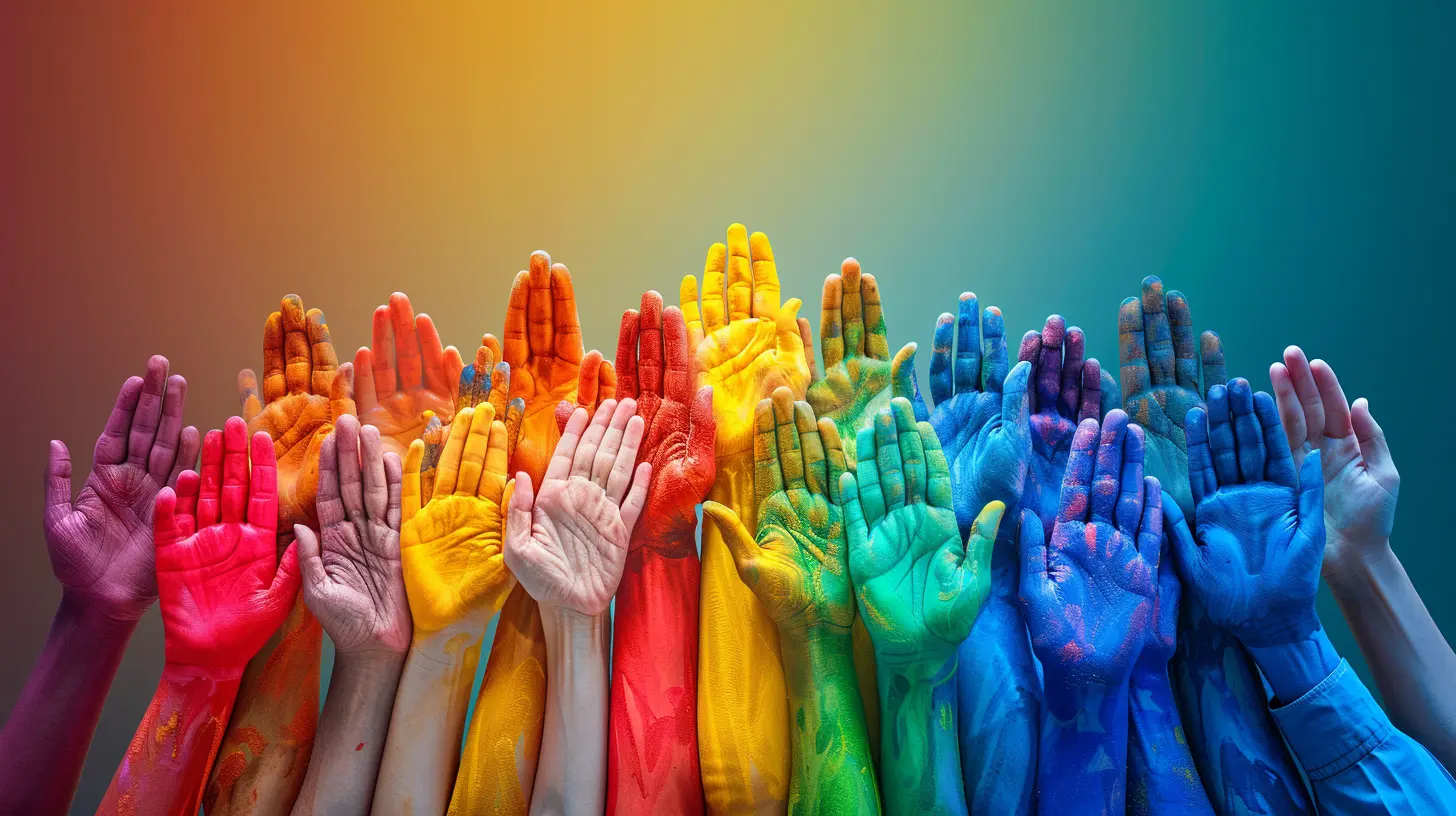The Power of Allyship in Promoting Workplace Diversity
7 August 2025
Every workplace is a melting pot of people from all walks of life. Different backgrounds, cultures, experiences, and perspectives come together to create something special. But let’s be honest—diversity is more than just a trendy buzzword plastered across company websites. It’s about fostering an inclusive and equitable environment where everyone feels valued. This is where allyship comes into play. Allyship isn’t just a fancy term; it’s the secret sauce to building and sustaining workplace diversity.
So, pull up a chair, grab your coffee, and let’s unpack why allyship matters and how it drives real change in the workplace. Spoiler alert: It’s not about grand gestures or complicated policies—sometimes, it’s as simple as lending your voice when someone else can’t.
What Is Allyship, Really?
Before we dive deeper, let’s get one thing straight: Allyship is not about being a savior. It’s about standing shoulder to shoulder with others. It’s the act of using your privilege, platform, or position to support colleagues who may face bias, discrimination, or inequality.Think of allyship like being a true teammate. If one player falls, the rest of the team steps in to help them back up, ensuring the game goes on. That’s allyship in action—supporting, uplifting, and amplifying voices, especially those that might otherwise go unheard.
Why Allyship Is Crucial to Workplace Diversity
1. Creates Psychological Safety
Imagine working in an environment where you’re too scared to speak up, fearing judgment or rejection. It’s not fun, right? Allyship helps create psychological safety by fostering trust. When people feel like they have supportive colleagues, they’re more likely to express ideas, share concerns, and participate fully.And here’s the kicker: When employees feel safe, teams perform better. Creativity skyrockets, collaboration thrives, and innovation blossoms. Sounds like a win-win!
2. Challenges Implicit Bias
Let’s face it—everyone has biases, whether we want to admit it or not. They’re part of being human. The problem, though, is when these biases influence decisions, creating barriers for underrepresented groups.This is where allies step in. By calling out microaggressions, questioning biased decisions, and educating themselves about systemic inequality, allies help break down those barriers. It’s like shining a flashlight on something hidden in the shadows—it may not be pretty, but it’s the first step in addressing the problem.
3. Amplifies Marginalized Voices
Sometimes, people from marginalized groups struggle to get their voices heard—not because their ideas lack value, but because systemic barriers keep drowning them out. Allies step in as a microphone, amplifying those voices and ensuring they’re part of the conversation.Think about it: If someone has a brilliant idea in a meeting but is constantly interrupted, an ally can simply say, "Hold on, I want to hear what they’re saying." It’s a small gesture, but it can make a world of difference.
4. Drives Organizational Change
Allyship doesn’t stop at interpersonal relationships. When allies collectively push for systemic changes—like updated hiring practices, fair promotion opportunities, or equitable pay policies—that’s when the magic happens. It’s not just about changing minds; it’s about changing the system itself.
How to Practice Allyship in the Workplace
Now, you might be thinking, "Alright, I get it. Allyship is important. But how do I actually do it?" Great question! Let’s break it down:1. Educate Yourself
Before you can be an ally, you need to understand the challenges others face. Read books, listen to podcasts, follow diverse voices on social media, and attend workshops. You can’t advocate for something you don’t understand.Pro tip: Don’t expect marginalized colleagues to educate you. It’s not their job. Google is your best friend here.
2. Listen Actively
We’ve all been in conversations where we’re so focused on what to say next that we barely hear the other person. Don’t be that person. When someone shares their experiences or concerns, really listen. Nod, ask questions, and make them feel heard.Not sure where to start? Try saying, "Thank you for sharing that with me. How can I support you?"
3. Speak Up
See something wrong? Say something. Whether it’s calling out a sexist joke or addressing an unfair promotion decision, your voice matters. Staying silent only reinforces the status quo.Remember that metaphor about shining a flashlight? That’s your role here—illuminate the issue and bring it to light.
4. Share the Spotlight
Allyship isn’t about stealing the limelight; it’s about helping others shine. If someone has a great idea, give credit where it’s due. If you’re invited to a panel or project, recommend a colleague from an underrepresented group instead. It’s not about losing opportunities for yourself—it’s about creating opportunities for others.5. Be Consistent
One-and-done gestures don’t cut it. True allyship requires consistency. It’s about showing up every single day, even when it’s uncomfortable or inconvenient. Think of it like going to the gym—results come with persistence, not one-off workouts.
Challenges of Allyship (And How to Overcome Them)
Let’s be real: Allyship isn’t always easy. There will be awkward moments, missteps, and times when you feel out of your depth. That’s okay—it’s all part of the process. Here are a few tips to navigate those challenges:- Fear of Saying the Wrong Thing: Nobody’s perfect. If you mess up, own it, apologize, and learn from it. People respect effort, not perfection.
- Pushback from Others: Not everyone will agree with your advocacy. Stand firm in your beliefs and remember why you’re doing this.
- Emotional Labor: Supporting others can be draining. Don’t forget to take care of yourself, too. You can’t pour from an empty cup.
The Ripple Effect of Allyship
Here’s the cool thing about allyship—it’s contagious. When one person stands up for diversity, others notice and are inspired to do the same. It creates a ripple effect, where small actions lead to big cultural shifts.Think about it like planting seeds. Each act of allyship is a seed of change, and over time, these seeds grow into a lush, diverse forest that benefits everyone. That’s the power of allyship—it transforms workplaces from the inside out.
Final Thoughts: Allyship Isn’t a Trend—It’s a Responsibility
Allyship isn’t about wearing a badge or patting yourself on the back. It’s about taking meaningful, consistent actions to create a workplace where everyone feels seen, heard, and valued. Whether it’s standing up to bias, sharing opportunities, or simply listening with empathy, every small act counts.So, the next time you walk into your office (or log onto Zoom), think about how you can be an ally. It’s not about being perfect—it’s about being present, intentional, and committed to making a difference. And trust me, when you do, you’ll help create a workplace where diversity isn’t just a goal—it’s a reality.
all images in this post were generated using AI tools
Category:
Diversity And InclusionAuthor:

Susanna Erickson
Discussion
rate this article
1 comments
Murphy Jones
Thank you for highlighting the critical role of allyship in fostering workplace diversity. Your insights underscore how supportive actions can create an inclusive culture where everyone thrives. It’s encouraging to see businesses recognizing the importance of collaboration and respect in promoting a diverse environment.
August 26, 2025 at 2:22 AM

Susanna Erickson
Thank you for your thoughtful comment! I'm glad you found the insights valuable in highlighting the importance of allyship in fostering an inclusive workplace.


